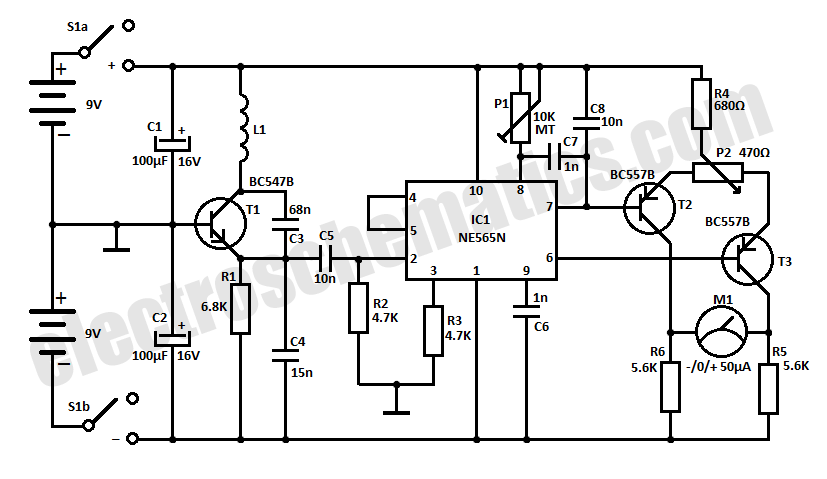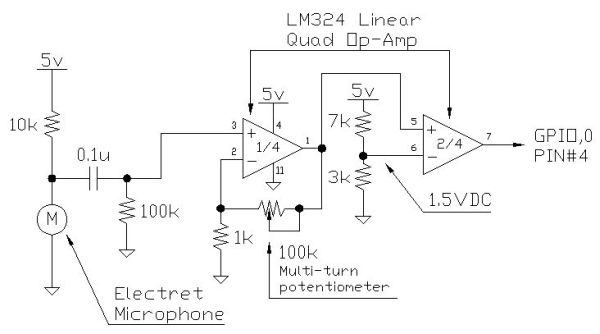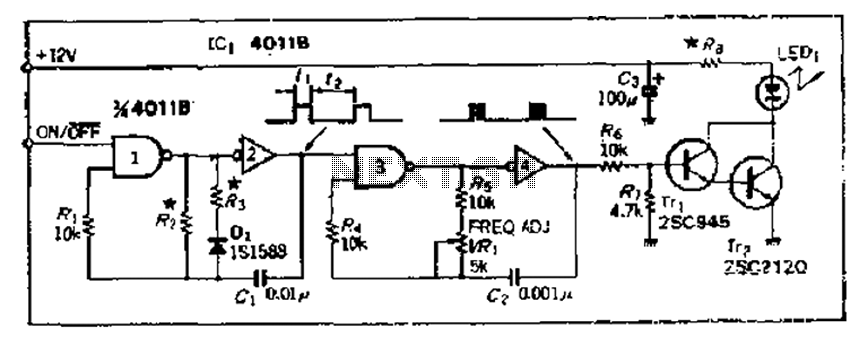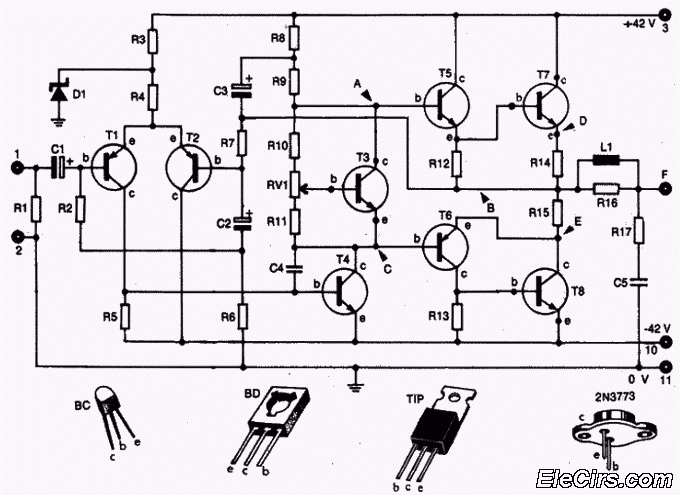
BFO Metal Detector using LF347N

Here's a metal detector circuit that frequencies of the two oscillators are then mixed in similar fashion to BFO, to produce an audible heterodyne. On the surface of it, this design would seem to represent little more than a twinned BFO metal detector. More: What makes the metal detector different above all else, and significantly increases its range, is that each coil modifies the frequency of the adjacent oscillator through mutual coupling. This introduces the "balance" that is present in an IB metal detector, and boosts sensitivity well beyond that of BFO.
The described metal detector circuit employs a dual-oscillator configuration that operates on the principle of heterodyning, similar to a Beat Frequency Oscillator (BFO). This setup includes two oscillators whose frequencies are mixed to generate an audible signal that indicates the presence of metal. The fundamental operation relies on the interaction between these oscillators, which allows for the detection of metallic objects by producing a distinct audio tone when the frequencies are offset by the presence of conductive materials.
A key feature of this design is the mutual coupling between the two coils associated with each oscillator. This coupling alters the oscillation frequency of one oscillator in response to changes in the magnetic field generated by the other oscillator. As a result, when a metal object is introduced into the detection area, the frequency shift becomes more pronounced, enhancing the sensitivity of the circuit. This mutual interaction is a hallmark of Induction Balance (IB) metal detectors, which are known for their improved detection capabilities compared to traditional BFO designs.
The circuit can be further optimized by adjusting the inductance of the coils and the capacitance in the oscillator circuits, allowing for fine-tuning of the detection depth and sensitivity. Components such as variable capacitors may be incorporated to facilitate easy adjustments based on the operating environment. Additionally, the use of high-quality components in the oscillator design ensures stable operation, reducing the likelihood of false signals caused by environmental interference.
In summary, this metal detector circuit stands out due to its innovative use of mutual coupling between oscillators, resulting in enhanced sensitivity and detection range. The design exemplifies the principles of IB technology while maintaining the straightforward operational characteristics typical of BFO detectors.Here's a metal detector circuit that frequencies of the two oscillators are then mixed in similar fashion to BFO, to produce an audible heterodyne. On the surface of it, this design would seem to represent little more than a twinned BFO metal detector.
What makes the metal detector different above all else, and significantly increases its range, is that each coil modifies the frequency of the adjacent oscillator through mutual coupling. This introduces the "balance" that is present in an IB metal detector, and boosts sensitivity well beyond that of BFO.
🔗 External reference
The described metal detector circuit employs a dual-oscillator configuration that operates on the principle of heterodyning, similar to a Beat Frequency Oscillator (BFO). This setup includes two oscillators whose frequencies are mixed to generate an audible signal that indicates the presence of metal. The fundamental operation relies on the interaction between these oscillators, which allows for the detection of metallic objects by producing a distinct audio tone when the frequencies are offset by the presence of conductive materials.
A key feature of this design is the mutual coupling between the two coils associated with each oscillator. This coupling alters the oscillation frequency of one oscillator in response to changes in the magnetic field generated by the other oscillator. As a result, when a metal object is introduced into the detection area, the frequency shift becomes more pronounced, enhancing the sensitivity of the circuit. This mutual interaction is a hallmark of Induction Balance (IB) metal detectors, which are known for their improved detection capabilities compared to traditional BFO designs.
The circuit can be further optimized by adjusting the inductance of the coils and the capacitance in the oscillator circuits, allowing for fine-tuning of the detection depth and sensitivity. Components such as variable capacitors may be incorporated to facilitate easy adjustments based on the operating environment. Additionally, the use of high-quality components in the oscillator design ensures stable operation, reducing the likelihood of false signals caused by environmental interference.
In summary, this metal detector circuit stands out due to its innovative use of mutual coupling between oscillators, resulting in enhanced sensitivity and detection range. The design exemplifies the principles of IB technology while maintaining the straightforward operational characteristics typical of BFO detectors.Here's a metal detector circuit that frequencies of the two oscillators are then mixed in similar fashion to BFO, to produce an audible heterodyne. On the surface of it, this design would seem to represent little more than a twinned BFO metal detector.
What makes the metal detector different above all else, and significantly increases its range, is that each coil modifies the frequency of the adjacent oscillator through mutual coupling. This introduces the "balance" that is present in an IB metal detector, and boosts sensitivity well beyond that of BFO.
🔗 External reference





